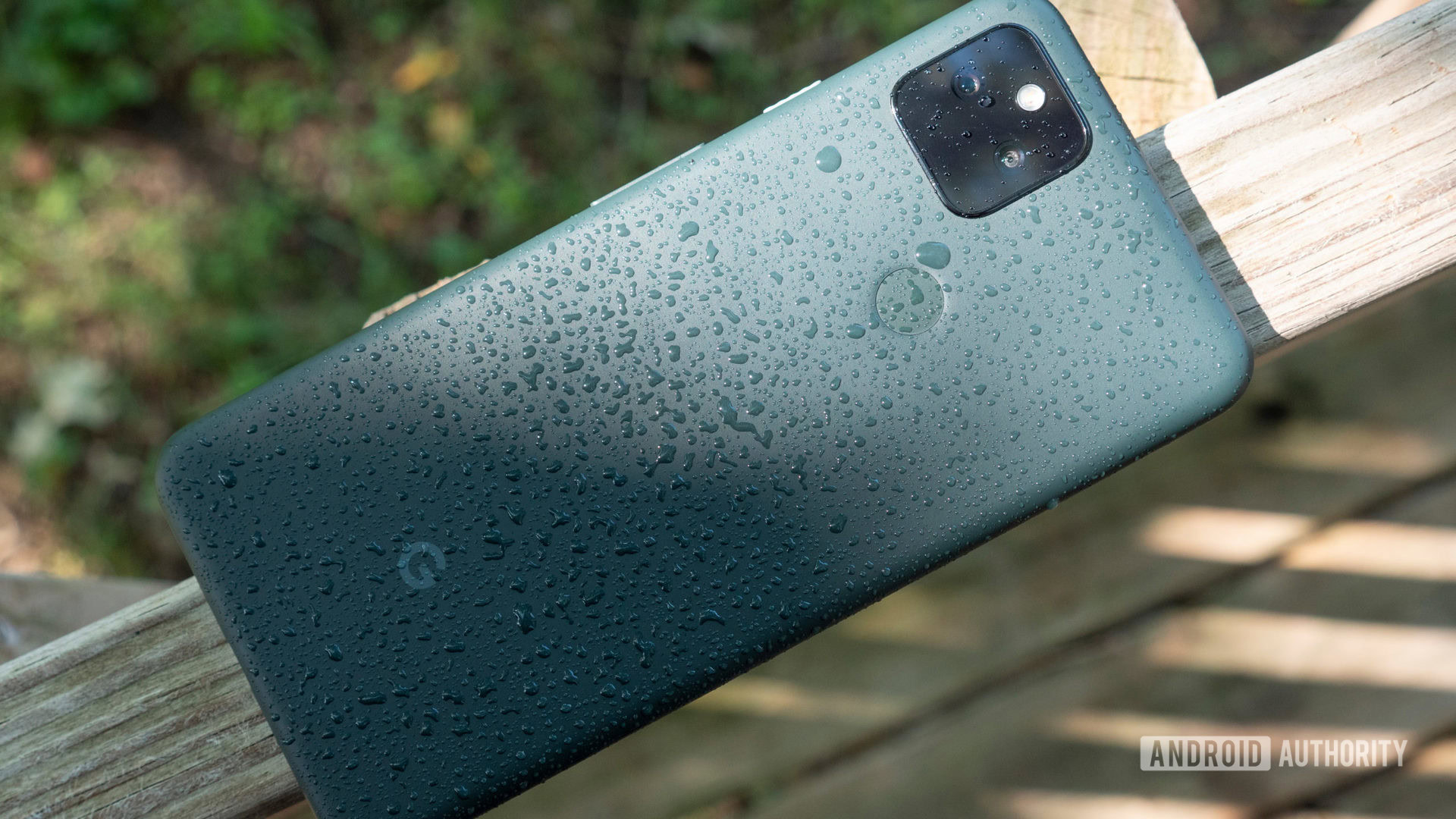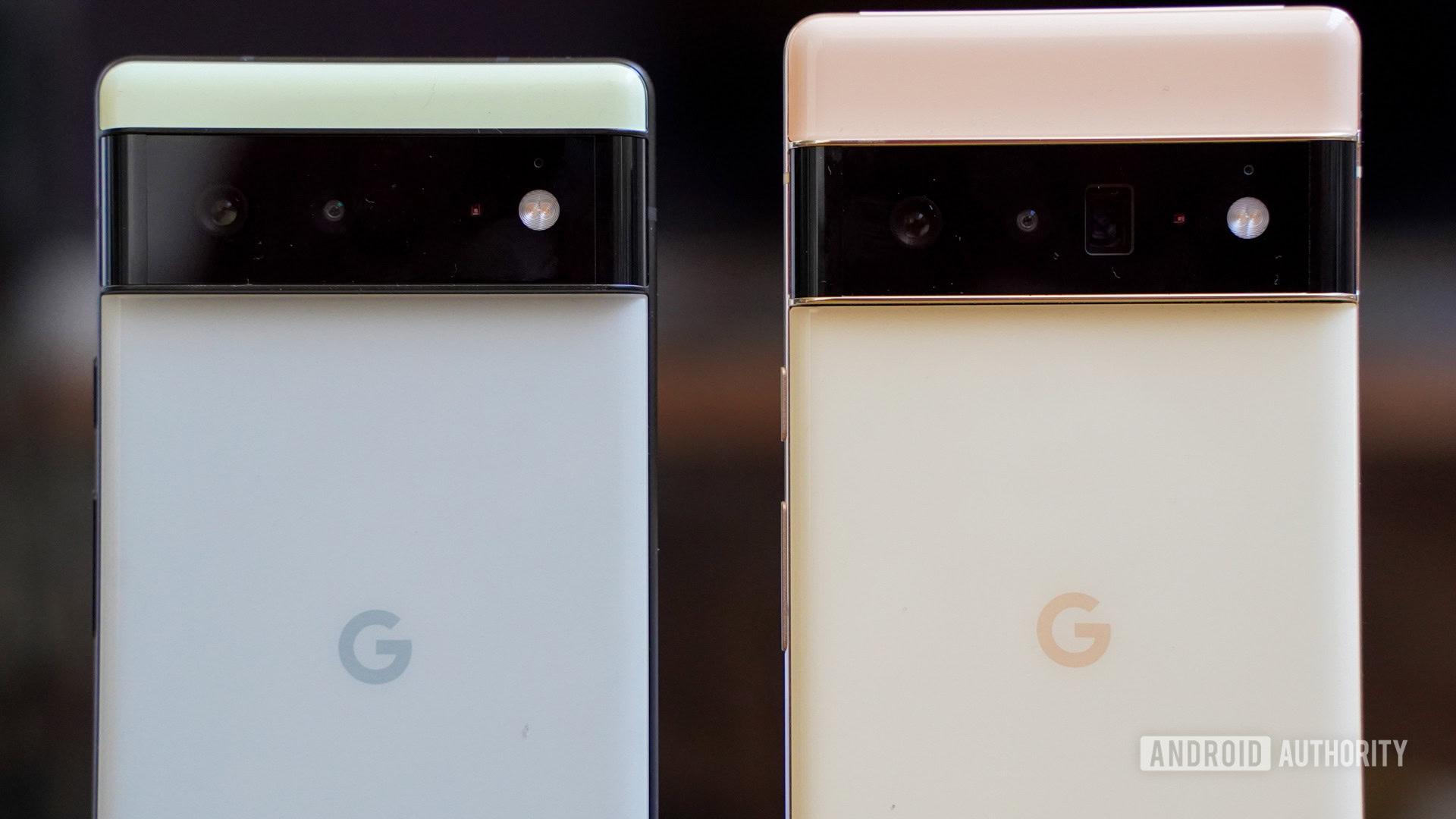Affiliate links on Android Authority may earn us a commission. Learn more.
Google is best when it's affordable, so why does it chase the premium market?
Published onJanuary 30, 2022

We’re three months on from the launch of the Google Pixel 6 and 6 Pro, and it’s been far from smooth sailing to say the least. Between an iffy fingerprint scanner, dubious charging metrics, and a completely broken December update, the phone doesn’t look as well polished as it did at its premiere. Some are quickly falling out of love with Google’s latest flagship.
A rocky start will hardly come as a surprise if you’ve followed any of Google’s hardware launches over the past decade. The company has rightly earned a reputation for hit and miss hardware; the Pixel 6 is simply the latest in a long list of troubled devices that are by no means limited to smartphones. While launches do occasionally slip up, we’d certainly expect better from Google, especially when spending up to $1,099 on the 512GB Pixel 6 Pro model.
Our verdicts: Google Pixel 6 Pro review | Google Pixel 6 review
Don’t misunderstand me, I still rate the Google Pixel 6 Pro highly and it remains my daily driver (for now). But when it comes to spending your hard-earned money, there’s little doubt that Google’s more affordable options have been the better buys in recent years. Likewise, if you’re talking premium cash, there are often better phones to pick than Google’s most expensive option.
Google Pixel: A history of caveats

The Pixel 6 Pro gets a lot right in the hardware department, in fact, it is Google’s best flagship package to date. But between the fingerprint scanner, good but not astounding cameras, limited 5G mmWave support, and performance that’s slightly behind industry leaders, the Pixel 6 Pro’s hardware was never in the same league as the most expensive handsets in the business. With software acting as Google’s unique selling point, bungled updates are the last thing the phone needs.
Looking back, we can make similar complaints about Google’s other premium-tier Pixels. The $999 Pixel 4 XL had poor battery life, limited storage, and its Soli radar unique selling point was poorly utilized. It also prevented the phone from being sold in India, a key market for Google. Not to mention a camera package that was already falling behind the flexibility of its rivals.
Pixel phones have a history of less than perfect hardware.
2019’s $999 Pixel 3 XL was certainly overpriced compared to the competition, as it didn’t offer too many major changes compared to its predecessor. And before that, the Pixel 2 suffered from a selection of screen issues, microphone dropouts, and earpiece bugs. Even the first Pixel XL wasn’t quite all there, with only an IP53 rating and no wireless charging or OIS for its camera.
While Google’s best has been good it’s never quite been ultra-premium. Each model has had some clear flaws that the Google faithful could overlook but which presented a notable list of caveats when compared to Apple and Samsung flagships. Of course, Google’s attention to software has been a major factor in helping the series punch above its weight. But it’s only once we shave a few hundred dollars off a premium price tag that suddenly Google’s Pixel series offers some of the best phones to ever grace the market.
Affordable phones done right

Turning to Google’s more affordable portfolio, it’s stacked to the rafters with highly recommended phones. The $299 Pixel 3a introduced budget phone consumers to Google’s camera prowess and software ecosystem, albeit with a compromise on waterproofing and wireless charging. But while other budget manufacturers often forgot about their phones once they left the factory, Google offered a flagship-tier update pledge that made its phone a much better long-term purchase.
Google perfected this formula with the Pixel 4a, bundling an excellent display, camera, and more memory for a very reasonable $350, while the 4a 5G cost $499. It was certainly as good a pick as Apple’s $399 iPhone SE, which was 2020’s hot seller. The more recent Google Pixel 5a and 5a 5G (pictured above) continue a similar trend, mixing solid hardware with excellent value.
Our verdict: Google Pixel 5a review
The company was confident enough to hang the Pixel ‘flagship’ lineup entirely on a more affordable option in 2020 with the Pixel 5 — a $699 phone that was never built to offer all the bells and whistles. While enthusiasts lamented its lack of cutting edge processing power and aging camera, the Pixel 5 offered wireless charging, an IP68 rating, great display, and solid battery life into a package decorated with Google’s excellent software and update pledge. That’s everything you need for a great smartphone experience and it reviewed well as a result. This seems to be the key for Google’s mid-range success — solid enough hardware at a compelling price, with premium software and extended ecosystem experience.
Solid enough hardware, a compelling price, and a premium software — that's Google recipe for mid-range success.
At $599, the Pixel 6 ticks the same boxes, with the bonus of a more powerful processor, improved rear camera, and faster-charging features that fans had been clamoring for. Not to mention a cheaper price tag, hence why it made Android Authority’s 2021 Editor’s Choice. The Pixel 6 is an even more compelling phone versus Samsung’s entry point as well as affordable flagships from Oneplus and the like. At this price, it’s much easier to overlook the so-so fingerprint scanner and the odd software bug, so long as they’re patched reasonably promptly.
Related: Google Pixel 6 vs Pixel 5 — What’s the difference and should you upgrade?
The value for money and subsequent success of Google’s more affordable products have earned it a lot of goodwill from both customers and pundits. But it only takes one poor release to undo years of praise.
Why does Google insist on trying premium?

Getting to the heart of the matter, Google’s mid-range phones offer a little bit of everything you want. Decent enough performance, a good camera, solid battery life, and update support that will last pretty much as long as you intend to keep the phone. All at a price that won’t break the bank. But the same can’t be said for its premium phones, which haven’t quite had the best performance, camera, charging, or other bells and whistles. So why doesn’t Google double down on what it’s good at and focus exclusively on the mid-tier?
See also: Google Pixel 6a — all the rumors
Ultimately, Google still feels the need to be seen competing with the high-end players, particularly in the US where premium brand recognition is king. Apple is cementing its lead with this strategy and Google doesn’t want to be seen as the “cheap” option, even though that’s probably already the case. Although the Pixel 6 Pro might not be absolutely cutting-edge, it’s still a showcase for Android 12 and what Google can do with a bigger budget. Not forgetting that it gets pundits talking about the phone’s unique features, such as live transcription and Magic Eraser, which are also available on the more affordable Pixel 6. Would the industry pay as much attention to Google if it only sold budget phones? Probably not.
The Pixel 6 Pro's hardware and software issues aren't just harming Google's flagship reputation but it's affordable one too.
But launching a product is one thing, making a success of it is another. Google’s hardware issues and software bugs, particularly in its highest-end Pixel 6 Pro, are hurting its reputation. Customers don’t want to buy premium phones that require months of software patches to bring them up to speed — just ask OnePlus. Pixels are already known for so-so hardware but buggy software could be the nail in the coffin for Google’s premium and possibly more affordable ambitions too. Furthermore, would anyone have faith enough to buy an expensive Google foldable phone in the future?
I’m not advocating that Google bailout of expensive hardware altogether, but if the company wants to continue, the segment needs to receive additional attention and resources to make its products truly premium and uncompromised — or as close as possible. The Pixel series has redefined what a great mid-range phone looks like but perfecting a premium combination of hardware, software, and support is less forgiving.
A half-baked high-profile release isn't worth damaging Google's affordable handset reputation.
One day, Google may defy history and nail a flawless premium-tier smartphone. With its new custom processor and its unique vision for machine learning integration, Google is still clearly in the same league as Apple and Samsung in terms of innovation. But premium products have to offer an uncompromised high-end experience too. Even though we’re five premium Pixels in, Google still has a lot to learn.